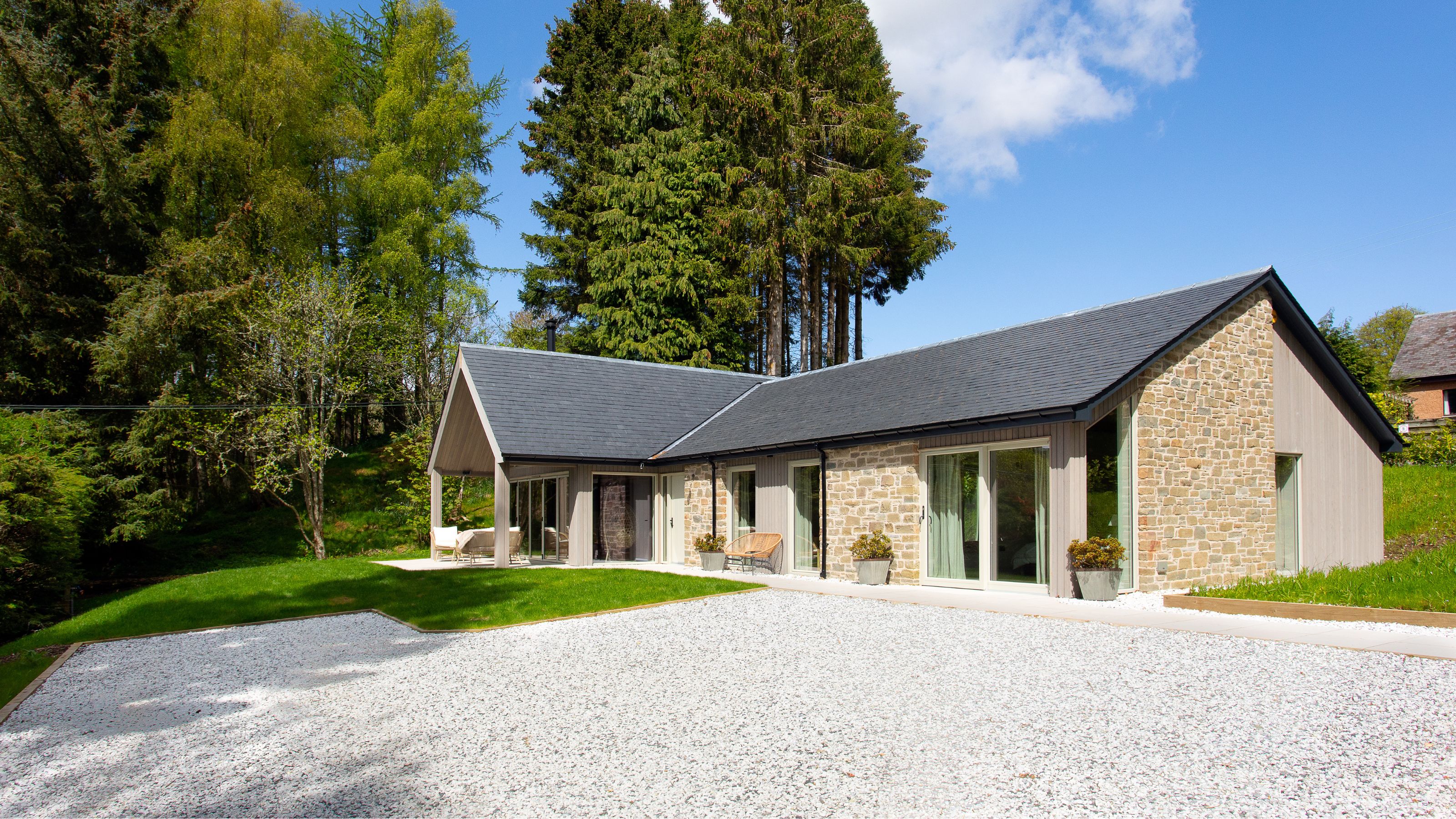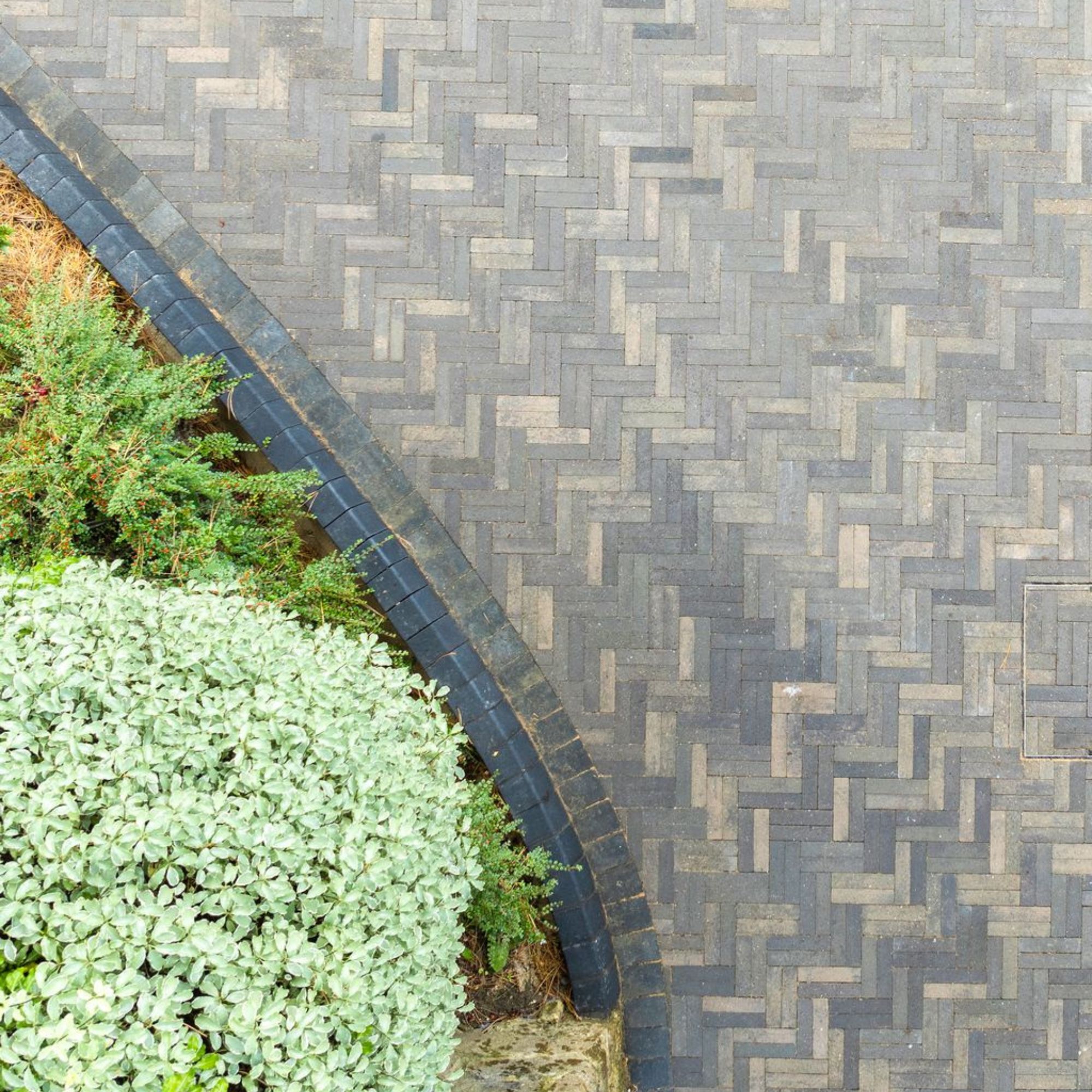This is how to resurface a driveway, including whether you can do it yourself and how long before you can park on it
Transform a driveway that’s damaged, dirty, or dated with our guide to resurfacing


If your home lacks kerb appeal, knowing how to resurface a driveway can prove valuable. A drive’s prominence means it makes a huge impact on your home’s appearance from the street, and if you understand the options for changing its appearance, the front of a house can be transformed.
Fresh driveway ideas can revive it if it’s worn or stained, doesn’t drain well, or you’re fighting a losing battle against weeds, moss and algae. What’s more, resurfacing can ensure the drive complements the style of your house as well as providing a place to park.
It might be possible to lay some driveway materials on top of an existing drive, but other options will require additional preparations beforehand, and we’ve provided the details on them here. And there’s also the information you need on whether resurfacing is a DIY job.
How to resurface a driveway

It's worth checking the best time to get your driveway done to ensure the best results as the process can be impacted by the weather. The process by which a driveway is resurfaced depends on the material used. And making sure you how to suitably prepare drive for a new surface is the best way to avoid common driveway mistakes that can leave you with a sub-standard result.
However, there are typical steps:
- Remove old surface
- Lay and compact sub-base
- Lay new surface

Piccolo Setts, Bradstone
If you’re opting for gravel, a weed membrane, like this heavy duty 4x5m weed membrane, (£19.95 from Amazon) should cover the sub-base to help stop plants coming up through the driveway. It can also be worth opting for gravel stabilisation grids, like this grid from Wickes (£18) to keep the gravel in place.
Block paving will need edge restraints laid onto concrete before the sub-base is laid, after which a layer of damp sharp sand should be added, compacted and screeded. After the blocks are laid, kiln-dried sand should be swept into the joints and the surface compacted.
Sign up to our newsletter for style inspiration, real homes, project and garden advice and shopping know-how
Edging is also needed for a tarmac driveway after which the sub-base is laid. Typically two layers are then used – a binder course and a surface course.
A resin-bound driveway also needs edging. It is laid on top of a base layer and then the resin and stone aggregates mixed, then poured onto the driveway, spread and levelled.
Decide on concrete, and forms will be needed to keep it in place as it hardens. Once the concrete is poured, it is flattened and smoothed.
It might also be possible to resurface your driveway by adding a fresh layer on top of the existing surface. In this case, the typical steps are:
- Clean drive to remove dirt and debris
- Remove weeds
- Fill any small cracks and holes, and level
- Lay new surface
Tarmac can be overlayed with new tarmac if the surface below is sound and level. A tack coat will be needed to bond the new surface to the old one. It may also be viable to lay tarmac over concrete, depending on its condition.
Consider the existing driveway carefully before opting to add a new layer, however. ‘For a surface with a lot of cracking and visible issues, starting from scratch may be the longest lasting option, as there may be issues with the original layering,’ says building expert Paul Kerr at Beatsons Building Supplies.

Lunar Block Paving in Silver Dust, Marshalls
What should you consider before resurfacing your driveway?
Drainage is a crucial consideration when you’re resurfacing to avoid damage to the driveway over the long term, and to help reduce flooding and keep surface water run-off out of sewerage systems in accordance with sustainable urban drainage (SuDS) legislation.
‘One of the most common mistakes made when designing a driveway is overlooking drainage,’ says Trevor Knight, head of group technical operations, Marshalls. ‘Without the correct drainage you can expect to see water accumulation in areas you don’t need it and any standing water in turn can potentially cause future structural damage to your property. Water that can’t drain properly can wash out and destabilise the driveway’s base materials, causing cracks to form and other structural issues over time.
‘To avoid this, you just need to ensure that you choose the right drainage solution for your driveway,' continues Trevor. 'If your driveway is on a mainly flat plain, permeable paving is a great solution to help water drain away back to ground to the specially formulated sub-base below.
'On the other hand, if your driveway is on a slight incline, and you prefer a particular style of drainage, you could incorporate a hard-wearing drainage system or interconnecting drainage channels. These will collect the water as it cascades, reducing the majority of surface water run-off, keeping it within your curtilage and staying within the legal SuDS legislation now in force.’

It is also worth considering how much maintenance a new surface will require when planning a driveway resurfacing project.
While most surfaces are easy to clean and care for, it will be necessary to deal with the movement of the stones if you opt for a gravel driveway and top them up as required.
One of these is also likely to require weeding even if there is a membrane installed. Weeds and moss can also grow between pavers if you choose these. If you opt for concrete, while it’s generally easy to look after, it can be stained by oil.
FAQs
Can I resurface my own driveway?
You might be able to resurface your own driveway depending on the scale of the project and the material you want to use.
‘For patch jobs and small fixes, you can absolutely do it yourself,’ says Paul Kerr. ‘We would advise doing some research beforehand to ensure you have the right tools for the job. Cracks in concrete are quite easy to deal with using small scale DIY concrete kits. Just be careful with the wet material as you don't want it drying on clothes or skin (or surrounding plants and ornaments). Gravel is also an easy material to deal with.’
However, it’s worth calling in a professional for for complex materials. ‘For tarmac and cobbling, we would advise seeking expert advice,’ says Paul. ‘Tarmac needs to be heated before application, and it can be quite a dangerous process for amateurs. Cobbling is also very time-intensive and, when done wrong, can look awful – we'd advise the use of skilled labourers to get a cobbled finish that looks great.’ Block paving needs careful placement, too.
And while it is possible to lay a resin-bound driveway yourself, it is generally advisable to call in professionals as there are a number of ways in which errors can be made.
How long do you have to stay off a driveway after resurfacing?
How long you have to stay off a driveway after resurfacing will depend on the type of surface you choose. If your driveway is professionally installed, check with your installer as both the surface itself and the conditions in which it was laid count, but these are the typical periods you should wait.
Tarmac should be left to cure for at least three days before you drive on it, while concrete should be allowed at least seven days to do so. Choose block paving and it should be left for at least three days before parking on the driveway as should cobbles. For a new resin-bound driveway, waiting up to three days before driving on it is also advisable.
Before you resurface your driveway, you should also check whether you need planning permission for your driveway plans to ensure you stay on the right side of the law.

Sarah is a freelance journalist and editor. Previously Executive Editor of Ideal Home, she’s specialised in home improvement, interiors, gardens and property for over 25 years. As well as writing about home improvements including extensions, loft, basement and garage conversions, fitting new kitchens and bathrooms, installing new windows and doors and making eco-friendly upgrades, Sarah has taken on a range of projects in her own homes and she is a serial house renovator.
You must confirm your public display name before commenting
Please logout and then login again, you will then be prompted to enter your display name.